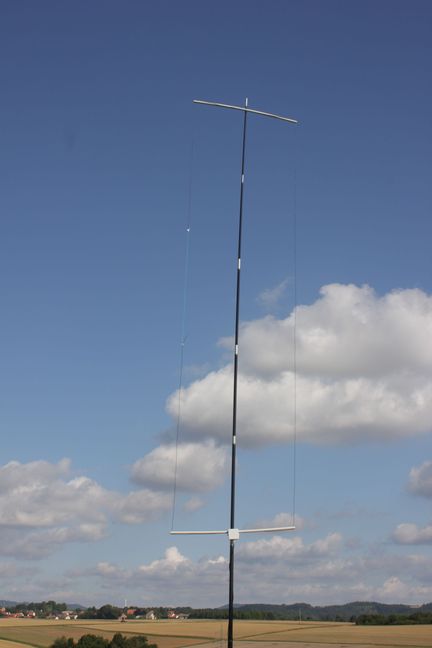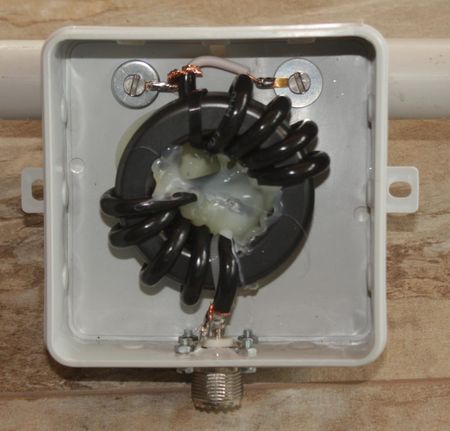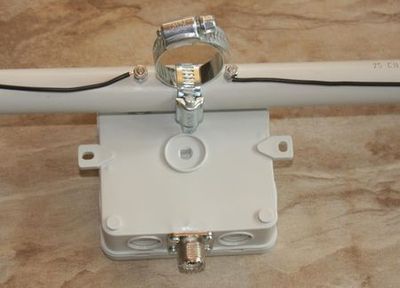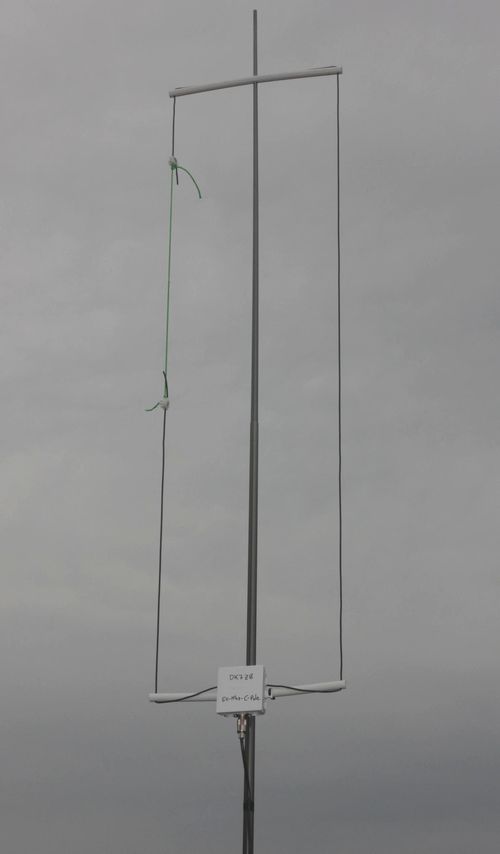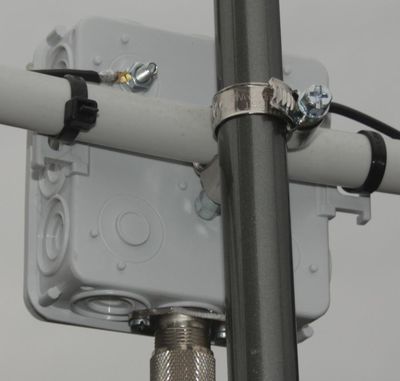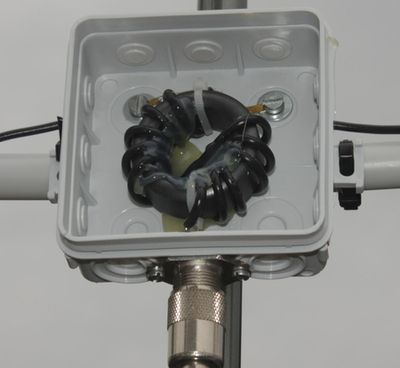|
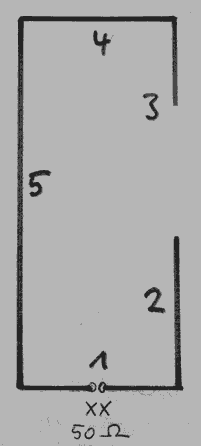 |
The C-Pole had been described first by Brian C. Cake (KF2YN) in QST
2004, No. 4, P. 37-39 "A Ground Independent Vertical
Antenna".
It is a folded half-wave dipole with an asymmetrical tapped 50-Ohm-point in the lower part of the antenna. I have modified the C-Pole for a greater bandwidth. Therefore the parts 1 and 2 are longer than in the original description and the gap between parts 2 and 3 is greater. The dimensions are < lambda/4 in the height and it is easy to build. It is a special type of an "OCF"-Antenna (Off-Center-Feed). These antennas show a tendency for common waves. For this reason it is obligatory recommended to use a current balun for the feeding. I have built the C-Poles with insulated 1,5 mm2-Copper-wire. For the sections 1 and 4 I have used insulated PVC-tubes as spreaders and support for the wires. The gain of the antenna is -0,75 dBd in free space. With the balun the antenna handles 1 KW HF SSB/CW.
|


